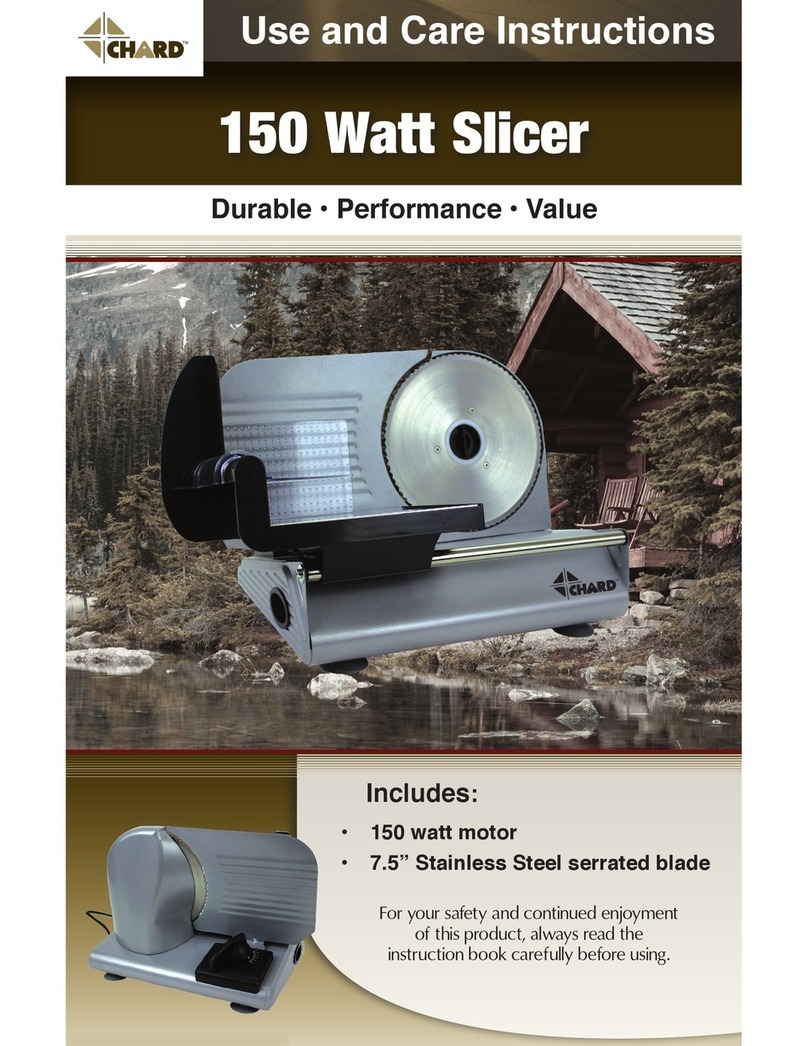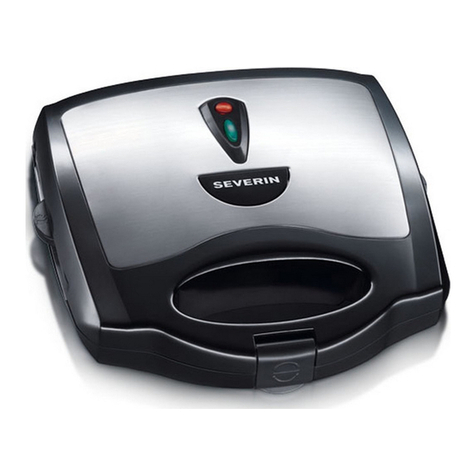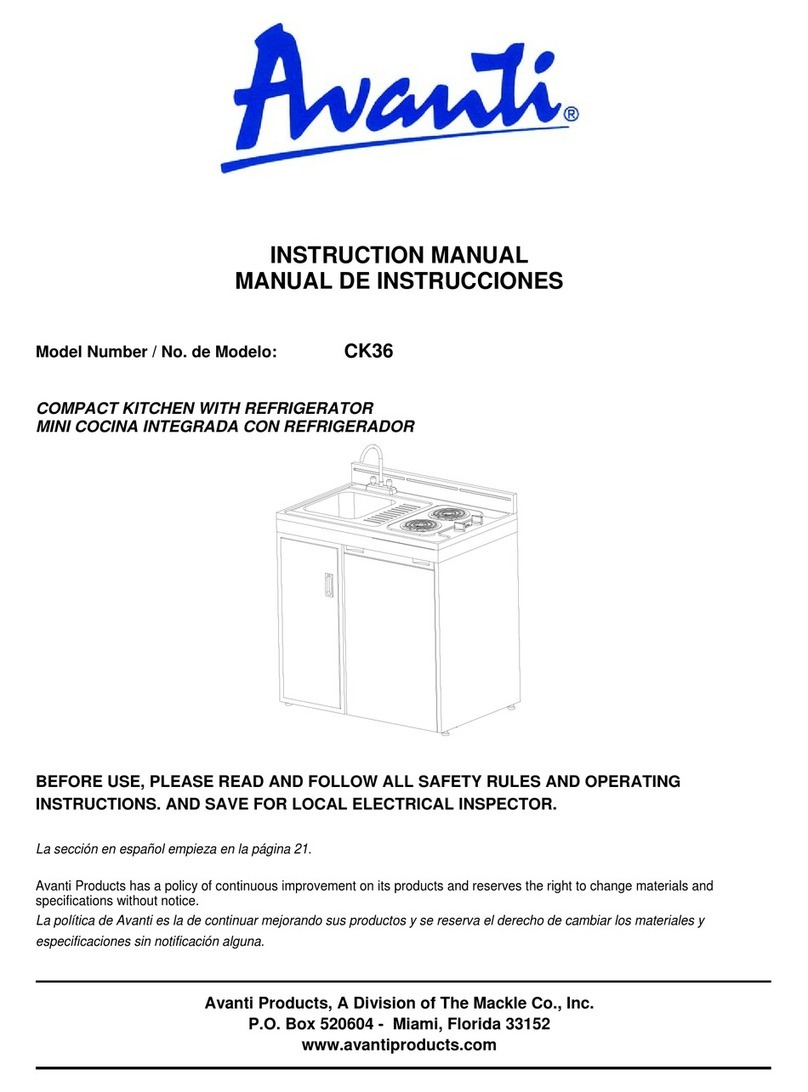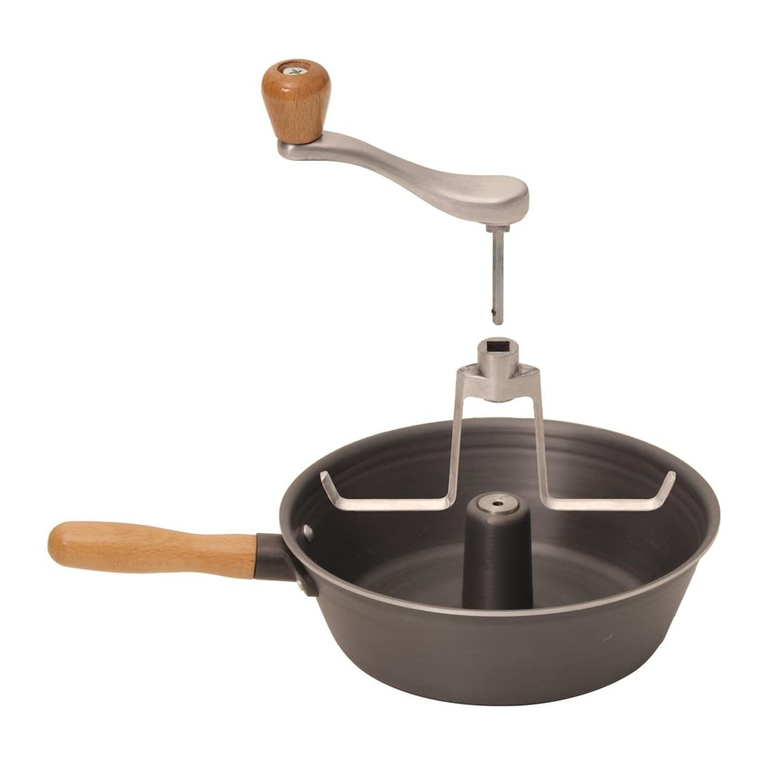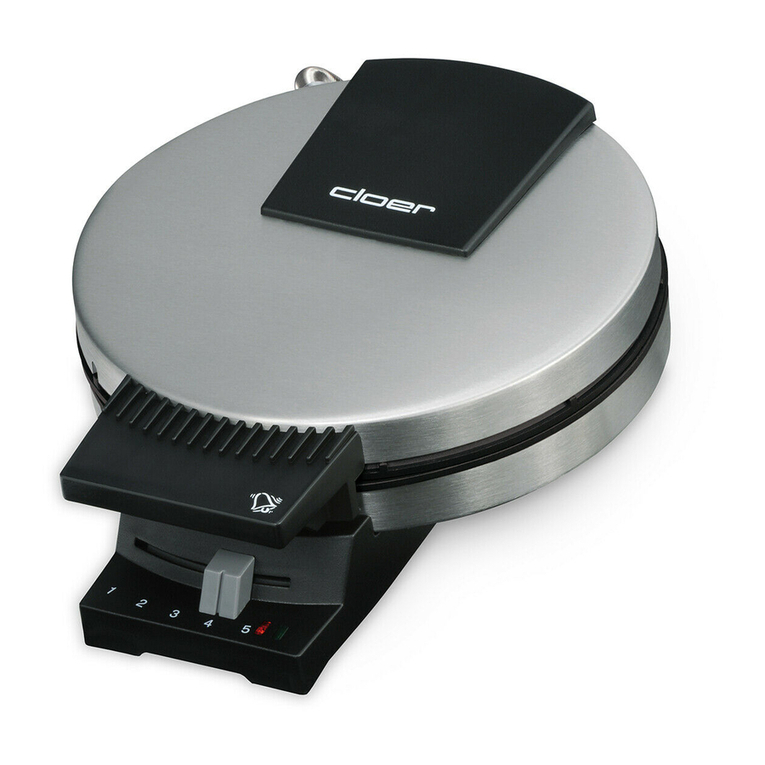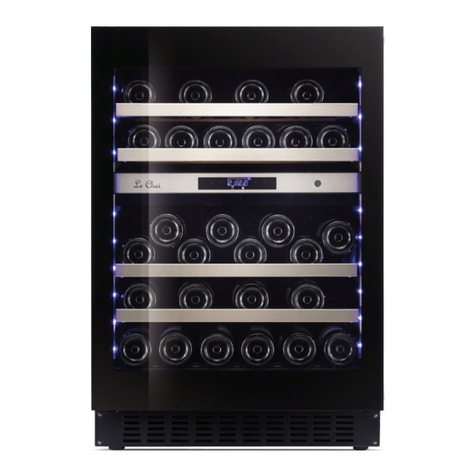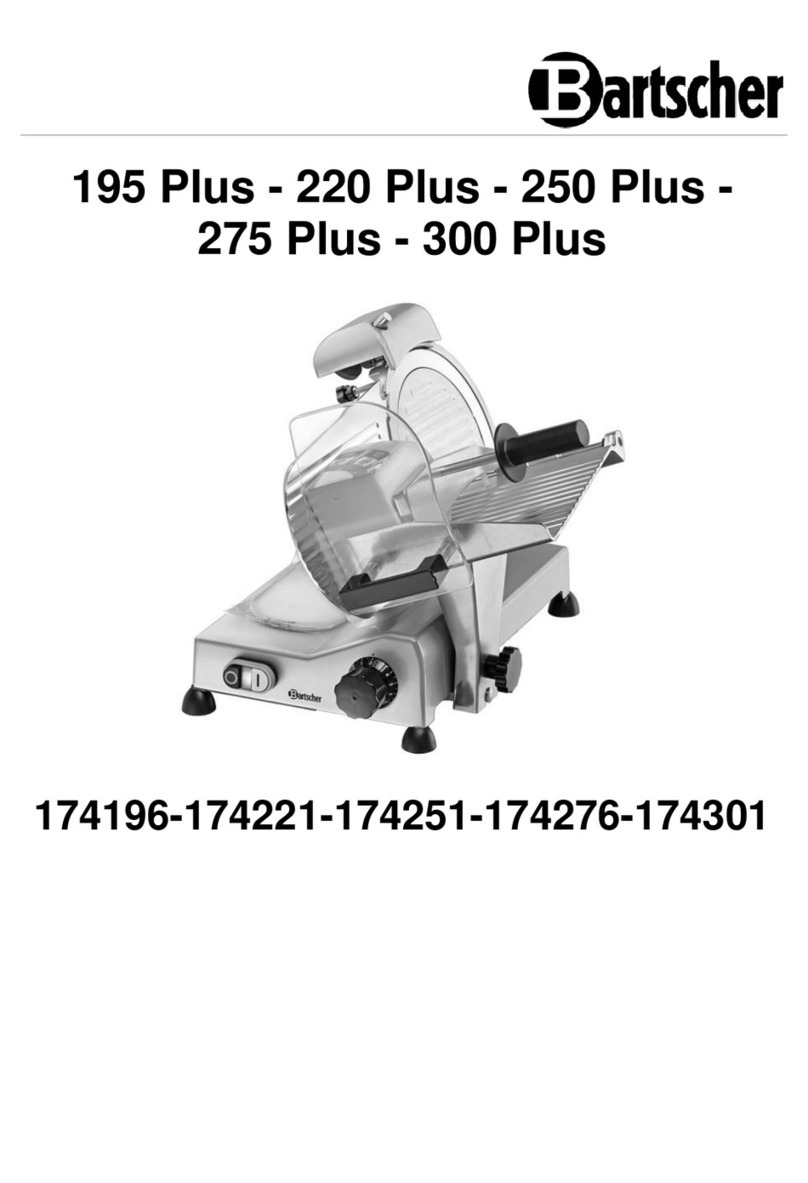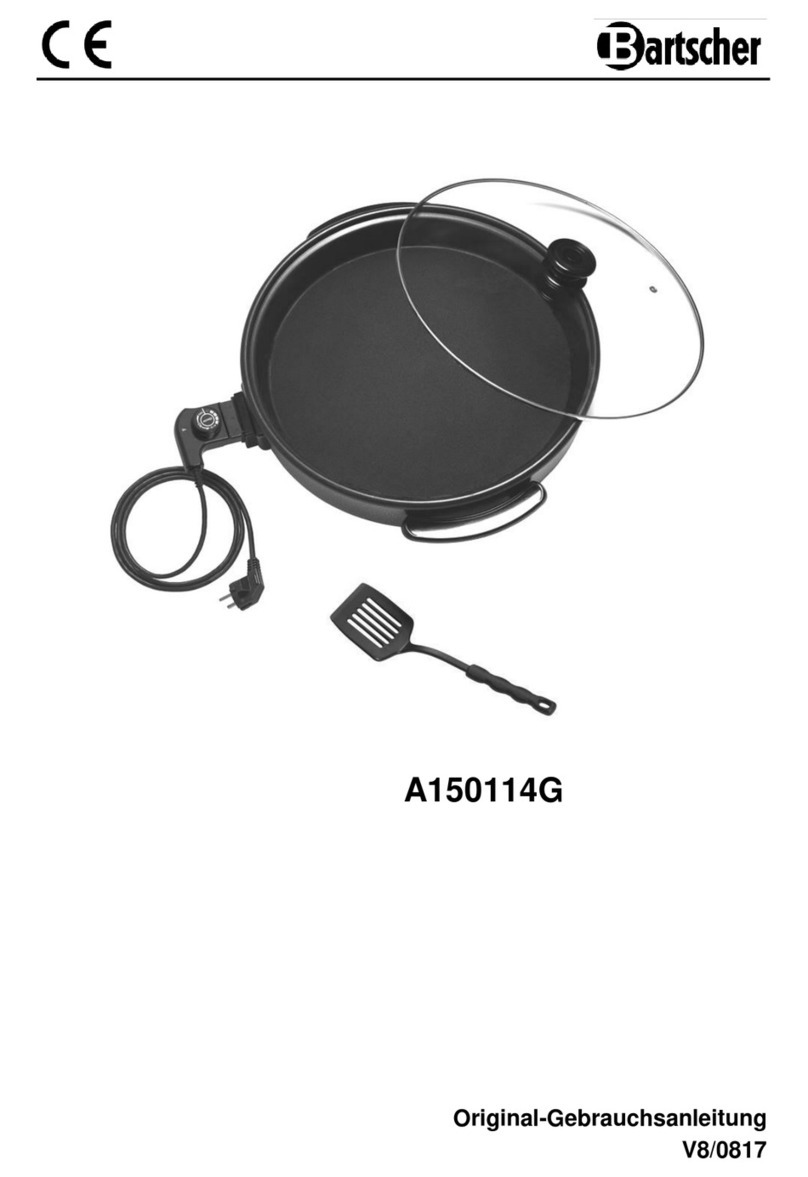Chard DD-5S Guide

FEATURES:
- Enhanced airow for better drying –
no need to rotate trays
- Digital display and timer
- Includes 5 trays
(Expandable up to 25 trays)

IMPORTANT SAFEGUARDS
When using any electrical appliance basic safety precautions should
always be observed including the following:
• READ ALL INSTRUCTIONS.
• To protect against risk of electrical shock, do not put appliance in water or other liquid.
• DO NOT touch hot surfaces. Use handles, knobs or oven mitts.
• Close supervision is necessary when any appliance is used by or near children. This appliance is
not recommended for use by children.
• Unplug from outlet when not in use, before putting on or taking off parts, and before cleaning.
• Allow to cool before putting on or taking off parts.
• Avoid contact with moving parts.
• Never put the unit near a hot burner or in an oven.
• DO NOT operate the appliance or any other electrical equipment with a damaged cord or plug or
after the appliance malfunctions, is dropped or damaged in any manner. Return unit to the nearest
authorized service center for examination, repair, or adjustment.
• DO NOT use outdoors.
• DO NOT use appliance for other than intended use.
• DO NOT let cord hang over edge of table or counter, contact sharp edges, or touch hot surfaces.
• DO NOT pull on the power cord to disconnect.
• Never plug in the appliance where water may ood the area.
• Place the appliance on a rm and stable surface.
• Ensure that the appliance is not placed close to the edge of the table, worktop, etc. where it can
be pushed off or fall.
• The use of attachments not recommended or sold by the manufacturer may cause re, electric
shock or injury.
• NEVER use abrasive cleaning agents or abrasive cloths when cleaning the unit.
• Only use the unit when completely assembled.
• DO NOT leave the appliance unattended while it is running.
• Before using for the rst time, remove all packaging and wash parts.
• This appliance has a polarized plug (one blade is wider than the other). To reduce the risk of
electric shock, this plug will t in a polarized outlet only one way. If the plug does not t the outlet
perfectly, reverse the plug. If it should still not t, contact a qualied electrician. Do not modify the
plug in any way.
• Prior to unplugging unit, turn power off.
• DO NOT place on or near hot gas, electric burner or in a heated oven.
• Extreme caution must be used when moving an appliance containing hot oil or other hot liquids.
• To disconnect, turn any control to “off”, then remove plug from wall outlet.
• CAUTION: Turn unit on and off using timer or On/Off button only.
WARNING
2

OVERVIEW OF THE COMPONENTS
ASSEMBLY INSTRUCTIONS
IF MISSING PARTS, PLEASE CALL 1-888-815-4252. DO NOT RETURN TO STORE.
FIGURE 1
1. COVER
2. DEHYDRATING TRAYS
3. BASE
4. VARIABLE TEMPERATURE CONTROL BUTTONS
5. ON/OFF BUTTON
1. Take contents out of retail box and dispose of waste properly. Thoroughly
wash all parts with warm soapy water and dry completely.
2. Place base on at, stable surface. One by one add trays to base making sure
that they are securely in place.
2
3
4
5
450 Watts of power dries foods quickly and evenly
1
3

HOW TO USE
Chard welcomes you to the world of safely preserving foods through dehydration.
Dehydrating is the process of removing moisture from food in order to create a
food with increased longevity and stability.
1. It is important to dry at the correct temperature for the item you are
dehydrating because vitamins within food can react negatively to high
temperatures. Pay careful attention to your temperature settings when drying
fruits, vegetables and meats.
2. To ensure consistent results always dry similar thickness items.
3. Use food that is ripe, but not over ripe.
4. Drying times will vary based on type and thickness of food being dried as well
as the relative humidity of the environment you are drying in.
5. Your dehydrator does have a clear top for easy observation of drying
progress so avoid opening the dehydrator excessively during use. Doing so
will add time to the drying process.
NOTE: DO NOT BLOCK THE VENT HOLE ON THE COVER.
6. Once your food is dried to the desired level, store it in a sealed container in
a cool dry place so that it does not reabsorb moisture. The dehydrated food
will naturally have less moisture in it than the air around it and will absorb
moisture if left out for an extended period. Note: storing in a freezer is
acceptable and will prolong the life of the food.
4

HOW TO USE
It’s easy to use your new dehydrator from Chard.
1. Start by plugging the unit in. Display light on the unit will ash “OFF”
2. Press the ON/OFF button once. You will hear the inner fan start operating.
3. Press the + button to set the temperature. Refer to this guide for some
suggestions based on what you are drying. If you go past the desired
temperature setting, simply press the – button.
4. When desired temperature setting is reached, press the TEMP/TIME
button.
5. Time will now automatically appear on the digital display as 00:00. Then
use the +/- to set the appropriate dehydrating time. Increments are by 30
minutes.
6. Press the TEMP/TIME button again. The temperature you selected will
reappear and ash several times. Dehydrating will now automatically begin
and automatically turn off when time is complete.
NOTE: TIMER MUST BE SET FOR DEHYDRATING TO BEGIN.
7. If you need to stop during the dehydrating time, you will need to repeat the
temperature and timer sequence to restart.
Herbs
95-104°F 35-40°C
Leafy Greens
104°F 40°C
Vegetables
122-130°F 50-55°C
Fruits
131-140°F 55-60°C
Meat, Fish
140-158°F 65-70°C
TEMPERATURE SUGGESTIONS:
5

1. Sanitation and a clean working area are essential. Wash hands thoroughly
with warm soapy water prior to making jerky.
2. Meat should be frozen or refrigerated until it’s ready to be used.
3. Do not allow raw meat to come in contact with the nished product.
4. Use a sanitizing solution or diluted bleach to clean all surfaces when done.
5. If marinating meat for whole meat jerky, always marinade in the refrigerator.
6. We recommend that you purchase a pre-packaged jerky spice and cure kit.
Follow the instructions for proper seasoning and curing.
1. Natural jerky is sliced from bigger pieces of meat. Make sure meat is in the
freezer until it is slightly hard to the touch but NOT frozen. This will help it
slice more evenly. For best results slice meat ¼” thick.
2. While there are many recipes for making your own jerky, we recommend
using a pre-packaged jerky spice and cure kit. Follow the directions provided
with the kit.
3. Place the meat on the drying racks making sure that they are not touching or
overlapping. Jerky typically takes 4-8 hours to dry properly.
4. When done drying, remove jerky from the trays and let cool for at least 30
minutes.
5. Use paper towels to remove any excess oil and fat that may be on the jerky.
6. Store in a covered or sealed container in a cool, dry place away from direct
light.
7. If you would like to store your jerky for more than 1 month it is recommended
that you store in a refrigerator or freezer.
SAFETY INFORMATION
Jerky is the most popular food to make in dehydrators. Making it yourself can
save you money and allow you to create your own recipes. Use any lean meat
you prefer such as beef, venison or sh.
PREPARING NATURAL JERKY
6

1. Quick jerky is made from ground meat. Use pre-packaged jerky spice and
cure kit prior to drying and follow their instructions.
2. Once the mix is ready, place meat into jerky gun and carefully extrude the
formed jerky strips making sure that the meat is not touching or overlapping.
Jerky typically takes 4-8 hours to dry properly.
3. When the jerky is removed from the trays pat any excess oil or fat from the
meat. Allow to cool for 30 minutes.
4. Store in a covered or sealed container in a cool, dry place away from direct
light.
5. If you would like to store your jerky for more than 1 month it is recommended
that you store in a refrigerator or freezer.
1. You can dehydrate any fruit that you enjoy. Let your own taste buds
determine what you choose to dry.
2. It is important to wash fruits thoroughly to make sure all dirt is removed.
3. You can halve, chop or slice your fruit. It is up to you whether you want to
peel your fruit.
4. You may want to pretreat your fruit before drying it. Doing so will help prevent
it from discoloring due to natural oxidation. To pretreat, simply use lemon
or pineapple juice and mix with water at a 1:1 ratio. Let fruit sit in mixture
for a minimum of 15 minutes. Then remove the fruit and let dry for at least
one hour prior to drying. There are commercial products also available for
pretreating.
5. Place fruit on the dehydrator trays in a single layer making sure that the fruit
is not touching or overlapping.
6. Please reference the fruit drying guidelines chart on page 10 for
recommended drying times.
7. Once the fruit is dried to your liking, let sit for at least 30 minutes to cool.
Store in a covered or sealed container in a cool, dry place away from direct
light.
PREPARING QUICK JERKY
DRYING FRUIT
7

Unlike other food, vegetables lose a lot of moisture towards the end of the
process. Therefore, they must be checked constantly near the end of the drying
process.
PREPARING VEGETABLES:
1. Thoroughly wash your vegetables to remove any dirt. Peel the vegetable and
slice it into even sizes so that they dry at the same rate.
2. Pretreatment is necessary for all vegetables in order to neutralize their
natural enzymes. Specically, steam blanching is the preferred method.
3. Bring a large pot that is lled 75% with water to a boil. Place your vegetables
in a colander or basket and place carefully in the pot ensuring that there is a
small gap for the steam to enter and cover with a lid. See vegetable drying
guidelines chart on page 11.
4. When you are done blanching, place the vegetables in cold water to cool
them off.
5. Remove the vegetables from the water and dry them.
6. Place them in a single layer on the dehydrator trays making sure that they are
not touching or overlapping.
7. To determine if your vegetables are done drying, take out a few pieces from
different trays in the dehydrator. If you cannot break the vegetable in half
with little effort, place them back on the dehydrator for more time. Repeat the
process until nished.
8. Once the vegetables are dried to your liking allow to cool for 30 minutes.
9. Store in a covered or sealed container in a cool, dry place away from direct
light.
DRYING VEGETABLES
8

1. Drying your own herbs is an excellent way to save money and ensure you
have a plentiful supply year round.
2. Once you select which herbs you want to dry, wash them in cool water to
remove any dirt.
3. Lightly dry them off and place them on the dehydrator trays.
4. Drying time for herbs is 30-90 minutes. Therefore, make sure to constantly
check herbs for dryness every fteen minutes at a minimum. They are
considered dry when you can easily crumble them in your ngers.
5. Once herbs are dried to your liking allow to cool for 30 minutes.
6. Store in a covered or sealed container in a cool, dry place away from direct
light.
DRYING HERBS
9

FRUIT DRYING GUIDE
Fruit Preparation *Pretreatment
Necessary Average Drying time
Kiwi Peel and cut into 1/4" to 1/2"
thick slices No 2-6 hours
Pears Peel, core and slice 1/8" Yes 5-13 hours
Pineapple Peel, core and slice 3/8" No 4-12 hours
Strawberries Remove top. Slice 3/8" thick No 4-12 hours
Apples Peel, if needed. Core, cut into
slices, 1/8" to 1/4" thick Yes 2-9 hours
Rhubarb Trim and throw away leaves.
Cut into 1/8" slices No 4-9 hours
Peaches Peel if needed. Cut and
remove pit. Quarter or 3/8" Yes
4-10 hours (slices)
8-16 hours (halves or
quarters)
Cherries Remove pit and stem. Cut,
chop or leave whole No 15-23 hours
Grapes
Cut in half or leave whole. Dry.
Put in boiling water for 40 to
60 seconds. Put in ice water
for skin to crack
No 13-21 hours
Prunes/Plums Quarter or halve and discard
pit No 8-15 hours
Nectarines Cut and remove pit. Quarter or
slice 3/8" thick Yes
5-10 hours (slices)
8-16 hours (halves or
quarters)
Apricots Slice in half, remove pit, and
cut in 3/8" slices Yes 8-16 hours
Blueberries
Remove stem. Put in boiling
water for 40 to 60 seconds.
Put in ice water for skin to
crack
No 9-17 hours
Cranberries
Remove stem. Put in boiling
water for 40 to 60 seconds.
Put in ice water for skin to
crack
No 10-18 hours
Bananas Peel and cut into 1/4" to 3/8"
slices Yes 6-8 hours
Figs
Remove stem. Halve or
quarter. Put whole gs in
boiling water for 40 to 60
seconds. Put in ice water for
skin to crack
No 8-15 hours
*Pretreatment - Use ascorbic acid mixture or lemon juice.
10

VEGETABLE DRYING GUIDE
Vegetable Preparation Steam Blanching
Time
Average
Drying time
Beets Cook until tender, peel,
cut into 1/4" thick strips N/A 2-7 hours
Carrots
Peel and cut off each
end, dice into 1/4"
slices
2-2½ minutes 2-8 hours
Celery Trim edges. Cut in 3/8"
slices 3 minutes 3-5 hours
Onions
Peel outer skin. Cut off
top and ends. Cut into
3/8" slices
N/A 3-7 hours
Tomatoes Peel, if needed. Cut
into slices 1/2" wide N/A 4-11 hours
Potatoes Peel and cut into 1/8"
slices 5-9 minutes 2-8 hours
Peas Shell 4 minutes 3-9 hours
Corn Cut corn from cob and
blanch 1-1½ minutes 5-11 hours
Broccoli Cut in pieces 2-2½ minutes 2-8 hours
Mushrooms Clean and slice 1/2"
thick N/A 3-7 hours
Peppers and Pimientos
Remove core, stem,
and inner partitions cut
into 1/8" strips
N/A 4-10 hours
Cauliower Cut in pieces 3-6 minutes 3-8 hours
Green/wax beans
Take off ends and
strings. Cut in 3/4" to 1"
pieces
3-3½ minutes 4-11 hours
Summer squash and
zucchini
Cut ends. Cut into 3/8"
wide 3½-4 minutes 2-6 hours
Asparagus Cut in 3/4" to 1" pieces 3-5 minutes 4-8 hours
CLEANING AND MAINTENANCE
• Before cleaning check if the dehydrator is unplugged and cooled down.
• Clean the body of the dehydrator with a wet sponge and then let dry.
• Do not use metal brushes or abrasive cleaners when cleaning the dehydrator,
because it can damage the surface.
11

WARRANTY
DD-5S / CHARD®5 TRAY DEHYDRATOR
C/O CI
PO BOX 444
TWO RIVERS, WI 54241-0444
chardinternational.com
Table of contents
Other Chard Kitchen Appliance manuals
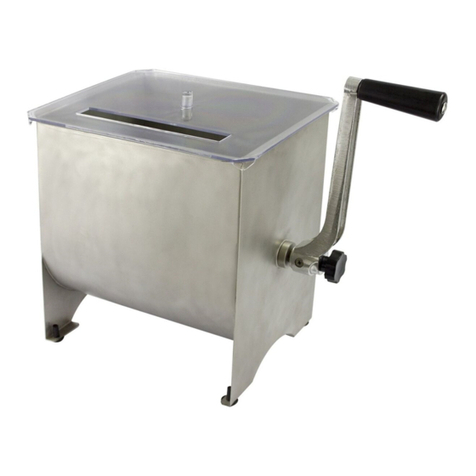
Chard
Chard MM-102 User manual

Chard
Chard FS-755B Guide
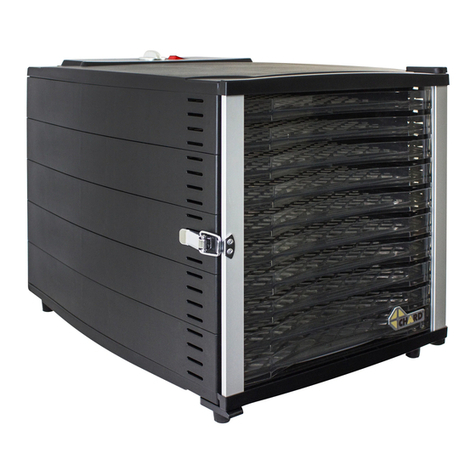
Chard
Chard DE-10 Guide
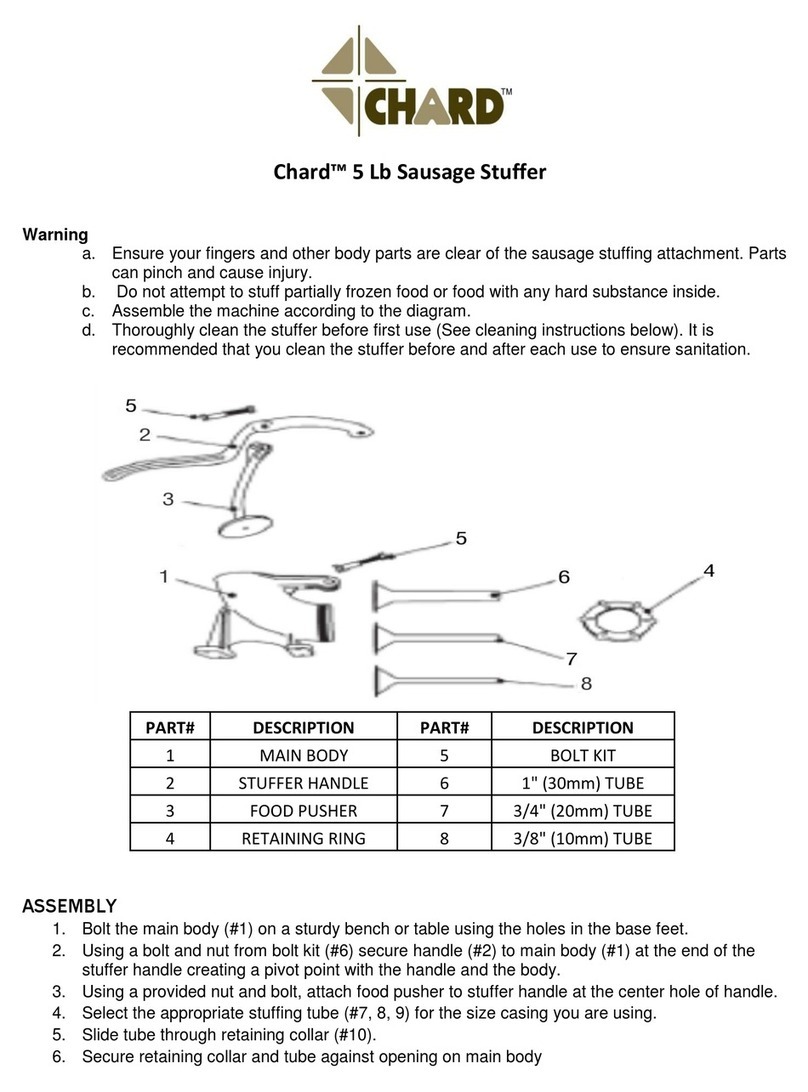
Chard
Chard 5 Lb Sausage Stuffer User manual
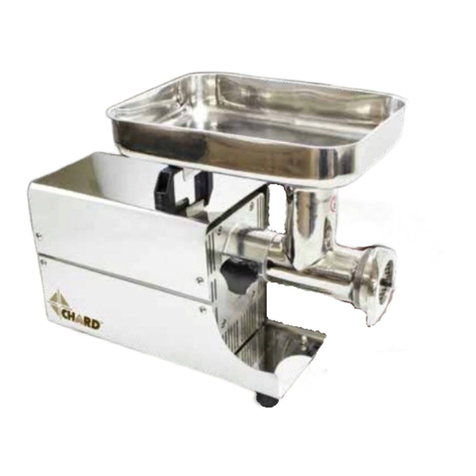
Chard
Chard 8 Pro-Power Grinder Quick reference guide
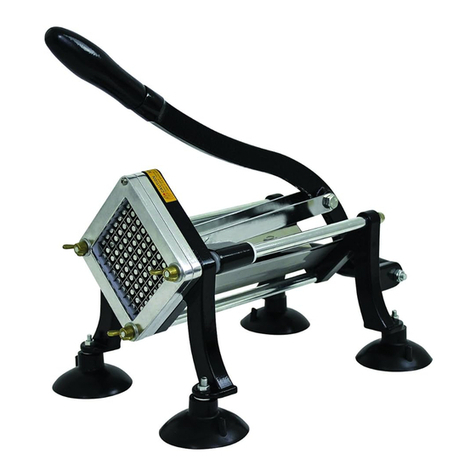
Chard
Chard FFC-1B Guide
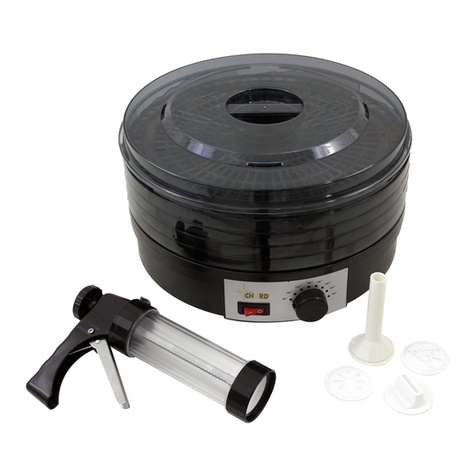
Chard
Chard DD-45JC Quick reference guide

Chard
Chard vS-SS Guide
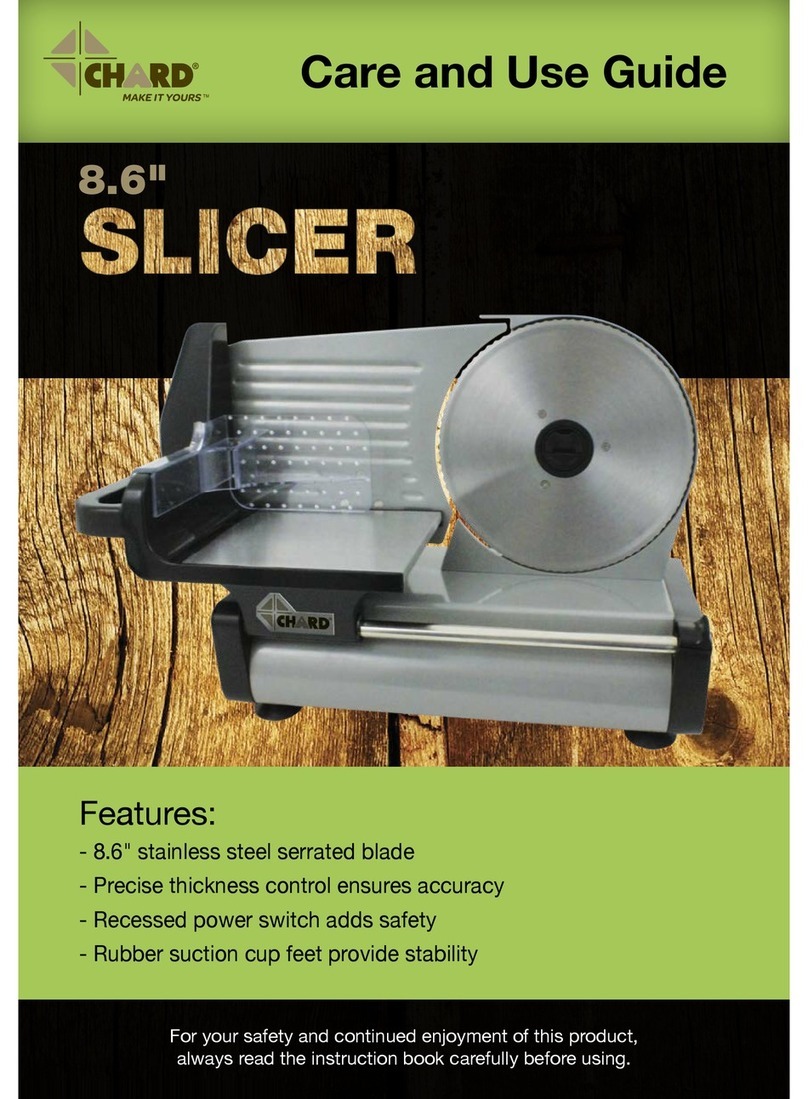
Chard
Chard FS-86SS Guide
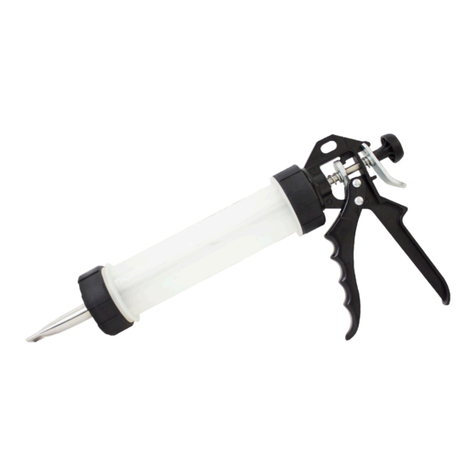
Chard
Chard JG-9 Guide
